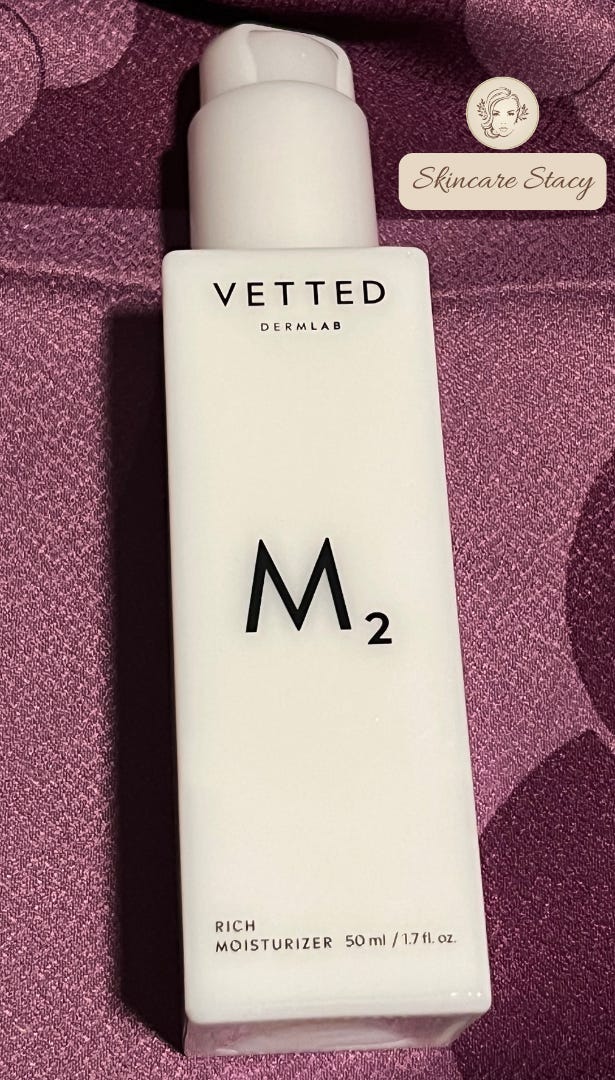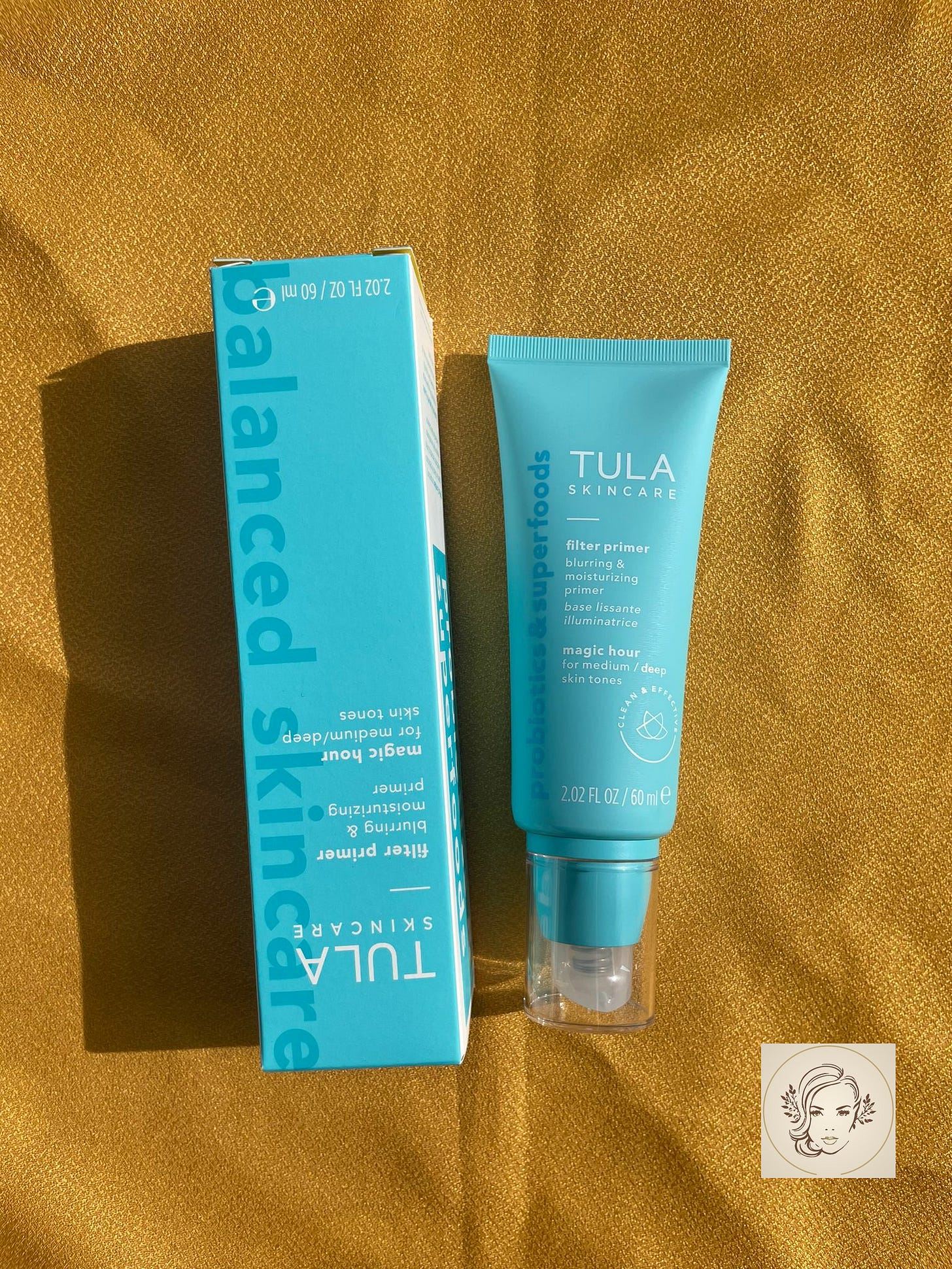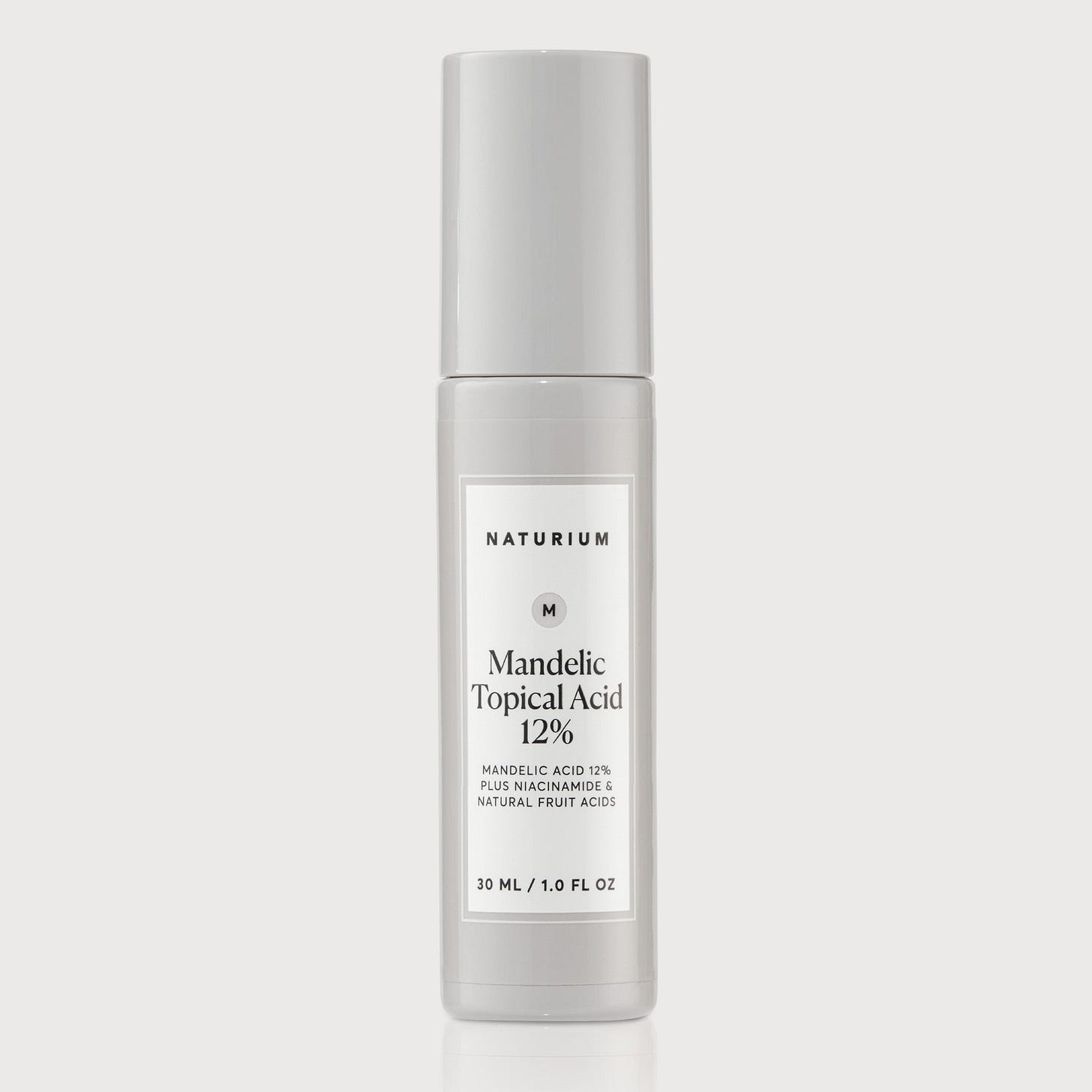What Does It Mean to Brighten Skin
How to get brighter, glowier skin using four simple methods
Everybody wants beautiful, bright, glowing skin, but what does it mean?
Skin brightening is a 4-method process that improves the way your skin interacts with light:
Reducing excess melanin production
Smoothing the epidermis
Providing hydration
Improving the refractive index
There are several methods and products that can be used to achieve brighter skin.
Some of my favorites include using:
Using vitamin C
Exfoliating acids
Humectants
Oils
In this article, I’ll teach you how to incorporate these methods to brighten your skin.
My methods are suitable for everyone: dull skin, lighter skin tones, darker skin tones, dry skin, and oily skin!
Inhibition of Melanin Production
Melanin is a pigment that is produced by skin cells called melanocytes. It is responsible for giving your skin color!
When your skin is exposed to the sun, melanocytes produce more melanin as a natural protective mechanism against the damaging UV rays.

This occurs in everyone, light skin and dark skin alike. It lead to an uneven skin tone and dark spots.
It can also exacerbate existing acne scars.
One way to brighten your skin is by slowing down the production of excess melanin.
Vitamin C is a powerful antioxidant that helps reduce melanin and even out your skin tone.
It is also essential for collagen production, which helps reduce the appearance of fine lines and wrinkles.
Sunscreen is another important product to use to protect your skin from sun damage and prevent hyperpigmentation.
Smoothing the Epidermis
Dead cells accumulate on the surface of your skin, giving you a dull complexion. But I know you want that beautiful skin glow!
Exfoliating your skin helps to remove these dead skin cells and reveal the brighter, younger skin underneath.
There are two main types of exfoliants in skin care: physical and chemical.
You can try both to find which gentle exfoliator works best for you.
I prefer to keep physical exfoliators for my body, not my face though.
Physical Exfoliants
Physical exfoliants, such as scrubs, use abrasive particles to mechanically remove the dead skin cells.
However, these can be harsh and may not be suitable for sensitive skin.
These skin care products are typically best for your body and not your face.
There are some brightening products that combine both physical and chemical exfoliation, such as the First Aid Beauty Bump Eraser Body Scrub.
Best practice would be to follow up with a moisturizer afterwards.
In addition to smooth skin, these manual methods of gentle exfoliation have the added benefit of cell turnover!
Chemical Exfoliants
Chemical exfoliators, on the other hand, use acids to dissolve the bonds between the dead skin cells and the healthy skin beneath.
These are generally gentler on your skin and can be more effective at providing you with smoother skin and improving overall skin tone.
Some examples of chemical exfoliators include alpha hydroxy acids (AHAs) and beta hydroxy acids (BHAs).
AHAs, such as glycolic acid and lactic acid, are water-soluble and work well on the surface of your skin to improve the texture and tone.
They’re ideal for speeding up cell turnover and clearing dark spots, giving you a natural glow.
BHAs, such as salicylic acid, are oil-soluble and can penetrate deeper into the pores to unclog them and reduce acne and blackheads.
However, exfoliants should not be part of your daily skincare routine.
Even more gentle brightening ingredients like kojic acid should be used a few times per week at most.
Hydration
Dry skin can appear dull and lackluster, so it is important to keep your skin well-hydrated and radiant.
Humectants are ingredients that attract and hold onto water, helping to keep your skin hydrated. Some examples of humectants include:
Panthenol
Glycerin
Hyaluronic acid
Urea
We need these natural ingredients to keep our skin healthy!
In addition to using humectants, it is important to lock in the hydration with an emollient.
Emollients are moisturizing ingredients that help create a protective barrier on your skin.
You’ll find emollients in skin care creams, lotions, and moisturizers.
Emollients deserve a place in brightening skincare year round!
You can read some of my reviews of good moisturizers with emollients here:
Paula’s Choice Ceramide-Enriched Moisturizer: A barrier‑building cream with ceramides, vitamin C, and a touch of retinol. It smooths wrinkles and makes your skin feel stronger
Medik8 Advanced Night Ceramide: This thick night cream is full of helpful ingredients like ceramides, antioxidants, and N-acetyl glucosamine. It works while you sleep to make your skin feel softer, look smoother, and appear more firm. It’s made to be used after vitamin A products, like retinol, and can help boost their effects.
M₂ Rich Moisturizer: A rich, barrier-repairing cream with ceramides and niacinamide. Safe for all skin types, including sensitive skin.
You may also prefer a tinted moisturizer instead of foundation!
Refractive Index
The refractive index of your skin refers to how light is reflected off its surface.
Oils can improve the refractive index of your skin by creating a glossy finish that reflects light and makes your skin appear brighter.
Rosehip oil is among my favorite skin brightening products because it’s affordable and doesn’t break me out.
Niacinamide is another great ingredient to even out skin tone too!
If I can attribute my ideal skin to anything, it would be adapalene and rosehip oil!
Another oil I like is True Botanicals Pure Radiance Oil.
Choosing the Right Products for Your Skin Type
It is important to choose skin care products that are suitable for your skin type and concerns.
For example, if you have sensitive skin, you may want to avoid physical exfoliators and opt for a gentle chemical exfoliant.
Mandelic acid is less irritating than other AHAs and ideal for brightening sensitive skin.
Try: Naturium Mandelic Topical Acid 12%: A gentle exfoliating serum that helps even tone without stinging.
If you have acne-prone skin, you may want to choose oil-soluble BHAs, such as salicylic acid, to unclog pores and reduce breakouts.
Try: Paula’s Choice Skin Perfecting 2% BHA Liquid Exfoliant: A cult favorite that clears pores and smooths texture without being too harsh.
Incorporating Brightening Products into Your Skin Care Routine
To get the most out of your brightening products, it is important to incorporate them into your skincare routine consistently and correctly.
Here are some tips for incorporating brightening products into your skincare routine:
Use a gentle cleanser to remove dirt, oil, and makeup from your skin
Use a vitamin C serum to inhibit excess melanin production and improve collagen production in the morning
At night, use a chemical exfoliator, such as an AHA or BHA, to smooth the epidermis
Use a moisturizer and face oil to hydrate your skin and lock in moisture.
Use an eye cream to brighten the eye area. I’ve been really loving Sunday Riley’s Auto Correct for this.
It is also important to be mindful of your lifestyle factors, such as sun exposure and diet, as they can affect the your complexion.
Also, be sure to eat a healthy, balanced diet rich in antioxidants.
In conclusion, what does it mean to brighten skin?
Brightening your complexion involves a combination of factors, including:
Inhibiting excess melanin production
Smoothing the epidermis
Providing hydration
Improving the refractive index
Incorporating the right skincare products and practices into your routine can help to improve the overall tone and texture of your skin, resulting in a brighter, healthier complexion.
Cheers,










